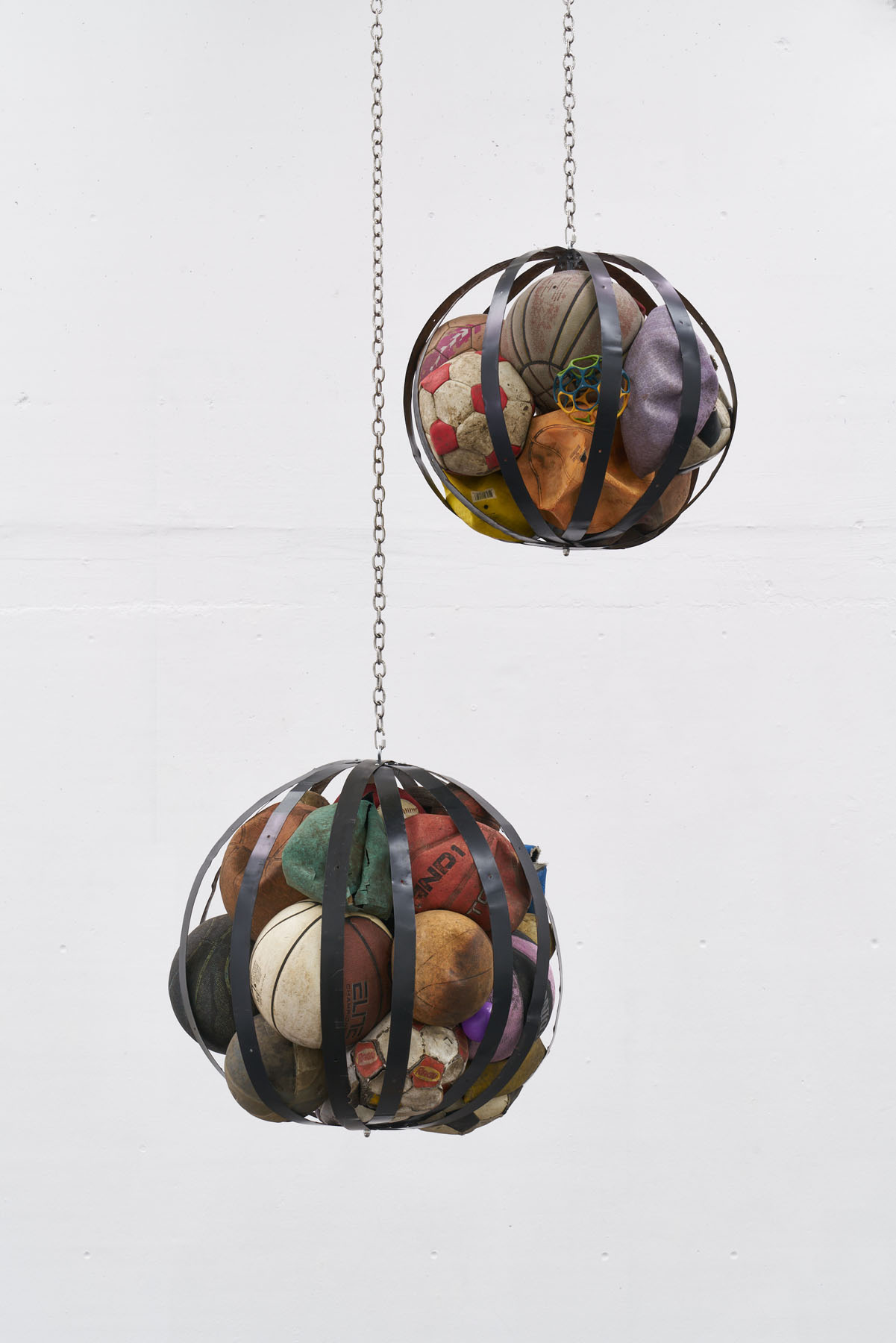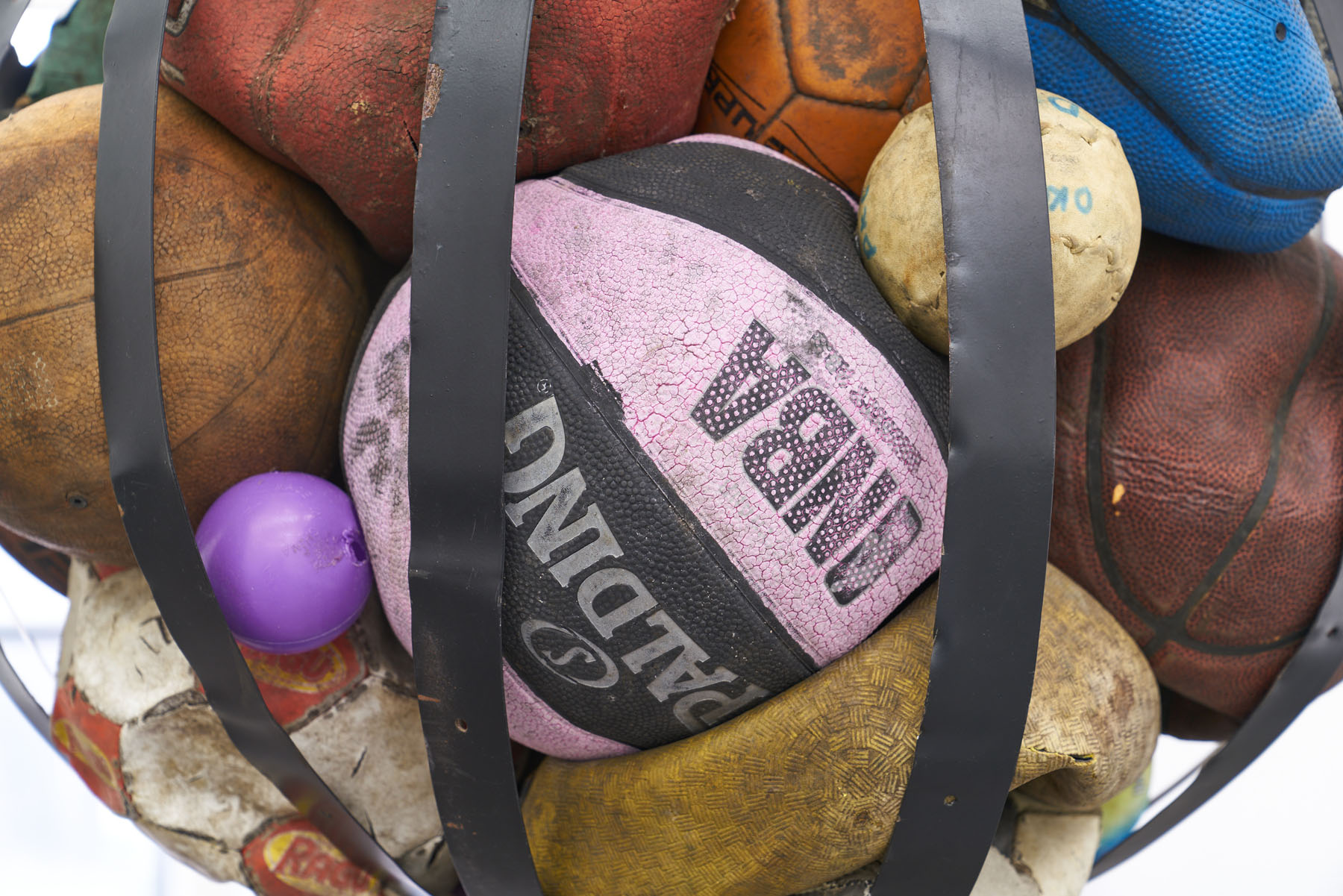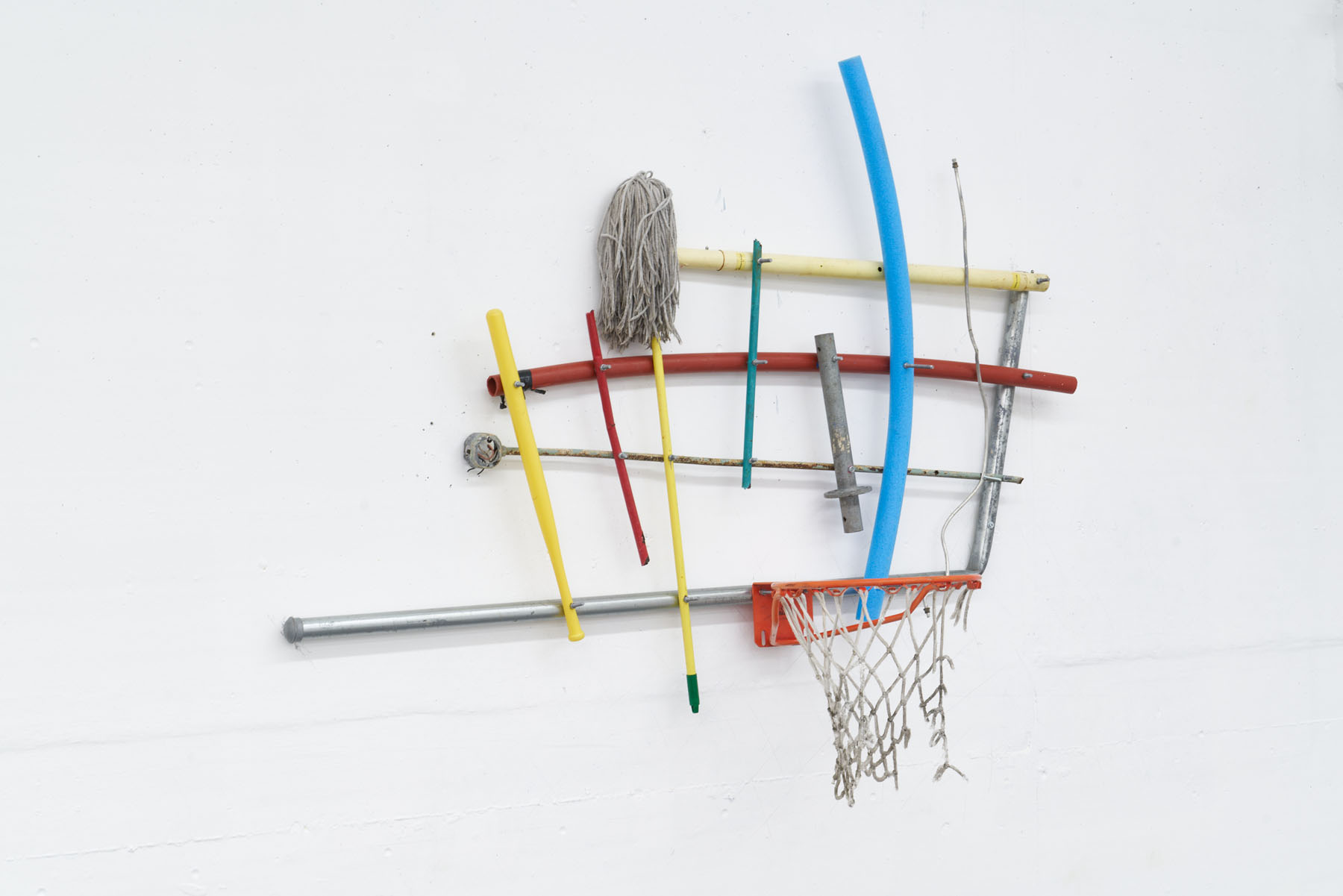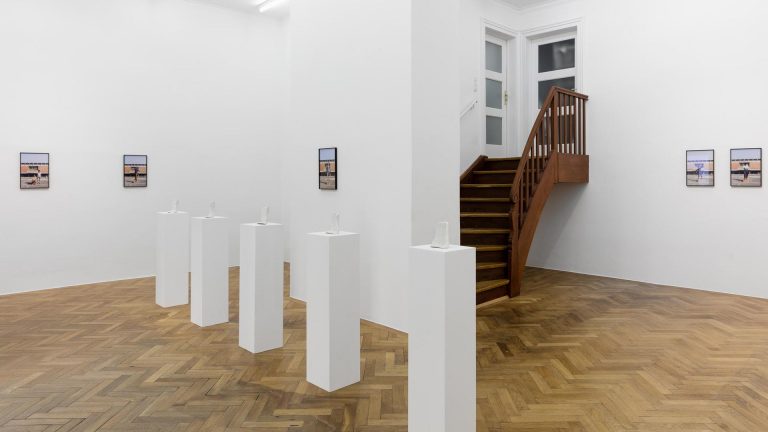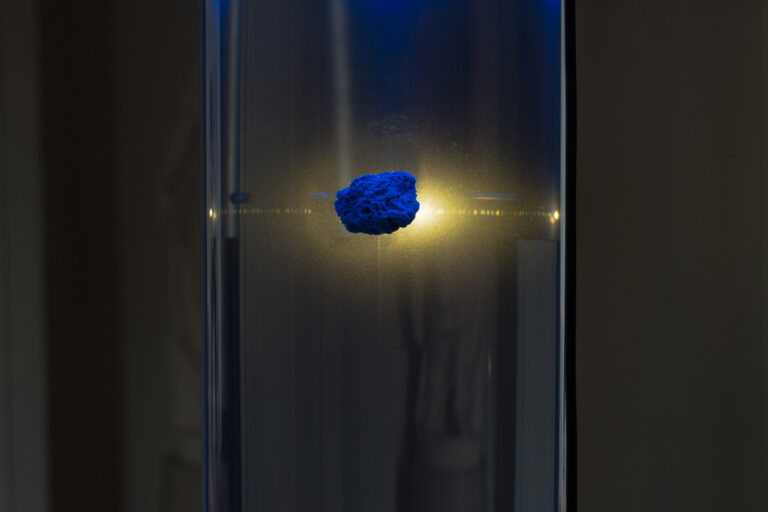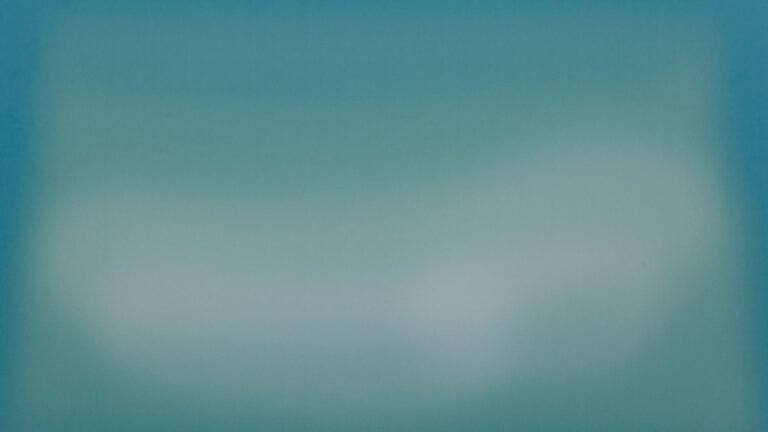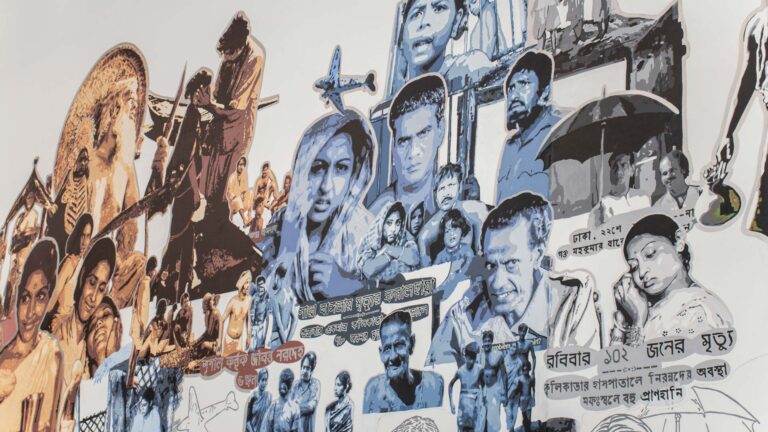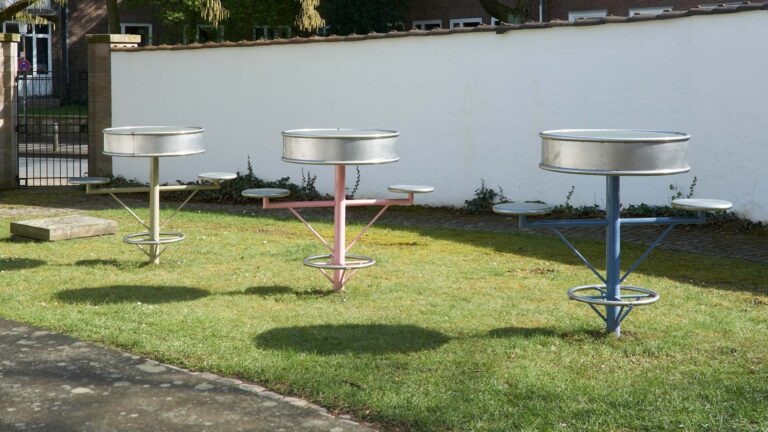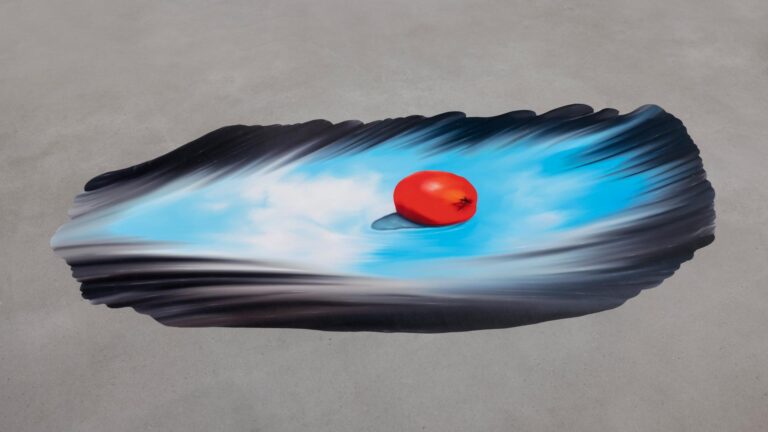Artist: Evan Robarts
Exhibition title: Time Out
Venue: Berthold Pott, Cologne, Germany
Date: September 4 – October 4, 2020
Photography: all images copyright and courtesy of the artist and Berthold Pott, Cologne
Evan Robarts’s solo exhibition Time Out opens on 4 September 2020 at Berthold Pott, Cologne, in conjunction with the Düsseldorf-Cologne Open Galleries Weekend (DC-Open).
For months now, Corona has been an omnipresent part of our lives and has affected all areas of society. Art has also not remained untouched by this and has been strongly pushed into virtual space. How do artists deal with the topic, and in what way does it influence and shape their work?
The US-American artist Evan Robarts, who lives and works in Brooklyn and Miami, has incorporated his observations of social ills in the context of Corona into his new works. These can be seen in a solo exhibition, for which Robarts has chosen the title Time Out, a reference to youth on the one hand and the effect of isolation during the COVID-19 pandemic on the other.
Robarts counters the ‘new normality’, which is defined by social distancing and the loss of intimacy in interpersonal contact, with symbols of play such as basketballs, children’s toys, and bicycles: relics of human interaction in times before COVID-19, which for Robarts refer to a past ‘golden era’. The materials used in the exhibition symbolise childhood and youth and at the same time express a sense of melancholy regarding their transience. The attempt to capture something fleeting and the unavoidable loss of youth, which is felt time and again in the course of life, are recurring motifs in Robarts’s work.
On an additional level, Robarts’s works explore urban space and its effects on the human soul. In the past six months of self-isolation, for example, he collected consumer waste on abandoned lots and in empty buildings in Miami, an unmistakable characteristic of crowded cities, which he reuses in his works. The result is drawings on canvas and sculptures that represent the failed relationship to ‘Mother Earth’ and to ourselves, as Robarts puts it. According to the artist, ‘the materials used are ‘the remnants of our attempt to find meaning and fulfilment in consumption and material escapism’.
The canvas works executed in oil chalk and charcoal are strongly influenced by Giacometti’s drawings of the late 1940s, such as Diego Seated (1948), which create a tension between spatiality, isolation, human location, and loneliness. The work Garbage Wall by Gordon Matta-Clark (1970), in which the artist compressed discarded objects into a sculptural wall, also provides references. Robarts’s sculpture Fountain, consisting of the Plexiglas back wall of a basketball hoop, reveals references to Duchamp’s The Bride Stripped Bare by Her Bachelors, Even (The Large Glass), from 1915–23. Robarts equips the plexiglass panel with fine, curved steel struts, makes it float, so to speak, and creates a kind of fountain – even a fountain of youth – in which, as described above, the power and vitality of youth are symbolically incorporated.
In Robarts’s installation Half Life, one recognises two large spheres suspended from the ceiling, floating in the air and connected by a chain, which in turn runs over a steel girder under the ceiling. Like scales, the weights seem to balance each other out. Both spheres consist of round metal barrel hoops, which, like an oversized gripping arm, hold a multitude of colourful balls, as if they were locked up together inside. Scattered on the floor below are other balls of various colours and sizes found by the artist on playgrounds and sports fields: Basketballs, footballs, small plastic balls that seem to have escaped the metal clamp and fallen to the ground. Through the title of the work and the symbolism associated with it, the artist leads us back to the theme of the exhibition: ‘Time Out’! Are we clasped and trapped in this crisis, or are the balls still rolling free in the game? What has become of the ‘childhoods’ and which ‘spaces of free play’ still exist at all?
While the exhibition attempts to find an artistic response to what has triggered the global crisis, the circle of artistic confrontation is closed with the artist’s unavoidable absence at the opening of his exhibition in Germany this September due to entry restrictions.
Evan Robarts: Born 1985 in Miami, lives and works in Brooklyn. Selected Exhibitions: solo exhibition at The Art Factory, Budapest (upcoming 2021), solo exhibition Kunsthalle Bremerhaven, Germany (2020), solo exhibition at The Primary, Miami, USA (2020), solo exhibition at Bryce Wolkowitz, New York City (2019, 2016), solo exhibition at Elliot Levenglick, Los Angeles, USA (2016), solo exhibition at Berthold Pott, Cologne (2018), group exhibition at The Pratt Institute, Brooklyn, USA (2017), group exhibition at Exo Exo, Brooklyn, USA (2016), group exhibition „Not really really“ at Fréderic de Goldschmidt Collection, Brussels, Belgium (2016), group exhibition at BANK, Shanghai (2016), group exhibition at Berman Museum, Collegville, USA (2015), group exhibition at Balice/Hertling, New York (2014)


















